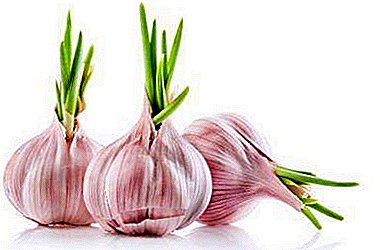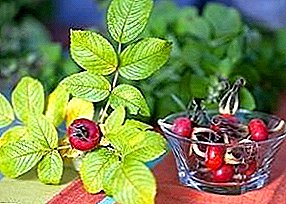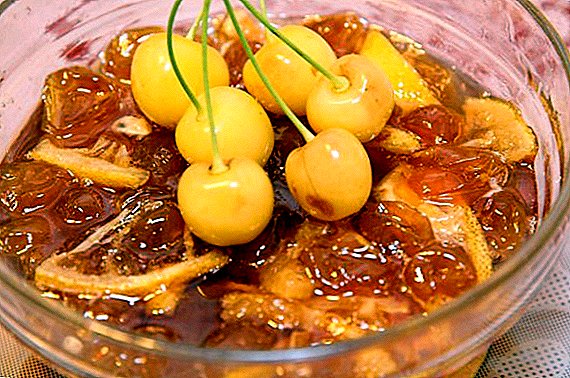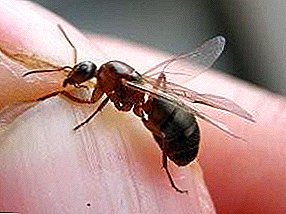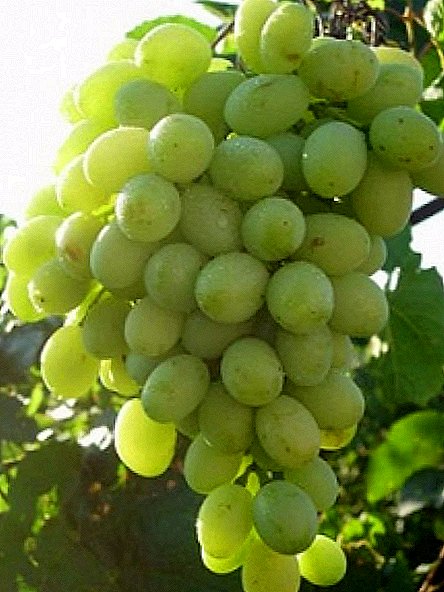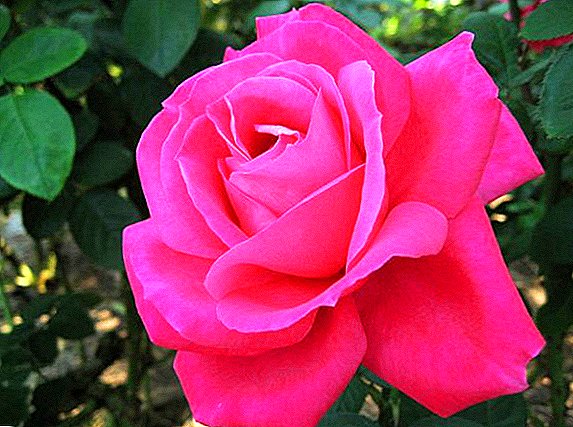 All people, especially the female half, love flowers. After all, this is one of the most beautiful works of nature, which never ceases to amaze with new forms and shades every time. And, of course, this is especially true of the queen of all flowers - roses. About her and will be discussed in our article.
All people, especially the female half, love flowers. After all, this is one of the most beautiful works of nature, which never ceases to amaze with new forms and shades every time. And, of course, this is especially true of the queen of all flowers - roses. About her and will be discussed in our article.
Rose history
An ancient plant like a rose certainly has a long history, shrouded in many secrets and legends.
Origin of the word
Initially, the name of the flower in Old Persian sounded like "wrodon". Further, in ancient Greek it was transformed into "rbodon", and in the Latin language acquired the familiar and familiar name "rosa".
Learn how to care for roses in a pot, how to grow a rose from a bouquet, and how to choose shelters for the winter.
Cultivation history
History claims that Ancient India is the birthplace of the flower. There, the man who brought the king a rose could ask anything from him. The plant was used in all ceremonial and religious ceremonies and was truly magnificent. From the East, the flower came to ancient Rome. There, roses began to grow, despite the fact that the main purpose of the gardens at that time was the production of useful plants (for eating, in the form of medicines, etc.).  With the collapse of the empire, the main gardening passed to the monasteries. Although the content of flowers solely for aesthetic pleasure was not common, roses took pride of place and were included in the list of recommended plants for planting. There was a rose in ancient Greece, where it was also highly revered. There she came either from Rome or directly from the East. After the seizure of Constantinople and the Crusades in Europe, previously unknown plant varieties appeared. By that time, the flower was actively grown, and its image was present in heraldry and architecture.
With the collapse of the empire, the main gardening passed to the monasteries. Although the content of flowers solely for aesthetic pleasure was not common, roses took pride of place and were included in the list of recommended plants for planting. There was a rose in ancient Greece, where it was also highly revered. There she came either from Rome or directly from the East. After the seizure of Constantinople and the Crusades in Europe, previously unknown plant varieties appeared. By that time, the flower was actively grown, and its image was present in heraldry and architecture.
You will be interested to know about which classes and groups roses can be divided into, what mistakes gardeners make most often, how to fertilize roses in spring, summer and autumn, and how to distinguish a rose from a rosehip.The flower was considered a symbol of perfection. In the 18th-19th centuries, many attempts were made to create varieties of roses that were resistant to the European climate. This became possible only at the end of the XIX century. Since then, the selection and cultivation of this plant are carried out in most countries, and the flower itself is considered a classic and never loses its popularity.
Did you know? The largest number of roses sold on Valentine's Day. The number of flowers sold across the planet reaches 3 million.
Plant description
Different varieties differ in color, shape, flavor, but they all have common characteristics by which you can easily recognize a rose among other flowers. 
Forms of bushes and shoots
The ground part of the rose includes the following components:
- main stems;
- shoots of a different order;
- flowers
Familiarize yourself with the major diseases of roses, including powdery mildew.
Leaves
A few leaves are attached to the petiole (most often 5-7, but sometimes their number reaches 15). Each type has a different texture, size and shape of the sheets. In most cases, their color is saturated green, rarely purple or with a copper tint. The edges can be both solid and have cloves. The surface of the sheet can be absolutely matte to glossy. 
Spikes
Spikes are formations on shoots that perform a protective function. They are very large and very small. Sometimes there are roses covered with small spiny hairs.
The spikes themselves may have a different shape:
- straight;
- crescent;
- bent down;
- oblate
Did you know? In Japan, brought a special variety of roses "Chameleon": During the day, the flower has a bright red color, and at night it becomes snow-white.
Buds
The buds of this flower have a large amount of essential oil, so they are often used in the preparation of high-class tea. This additive creates an incredible aroma, and also enriches the drink with various beneficial substances, which are very much in its composition. 
Flowers
Flowers are located on the top of the shoot or throughout its length and can be:
- single-flowered;
- many-flowered;
- few-flowered.
Read also about the charming varieties of roses: "Sins Thomas", "Double Delight", "Pierre de Ronsard", "Sophia Loren", "Falstaff", "Pink Intuition", "Blue Perfume" and "William Shakespeare".The nature of the coloring may also vary:
- single color;
- two-color;
- mixed
- striped;
- multi-colored;
- painted
- conical (goblet);
- spherical;
- cup-shaped;
- rosette;
- pompon;
- flat;
- square;
- uncovered;
- boat;
- with loose center.
 One of the main directions in the selection of this flower is to improve the flavor. Stronger and more interesting odors are more attractive for those who want to plant the plant in their home or get it as a gift. Everywhere, rose is used in the perfume industry and aromatherapy, as its smell is believed to have a calming and relaxing effect. Blossoms individual flowers or groups of several small.
One of the main directions in the selection of this flower is to improve the flavor. Stronger and more interesting odors are more attractive for those who want to plant the plant in their home or get it as a gift. Everywhere, rose is used in the perfume industry and aromatherapy, as its smell is believed to have a calming and relaxing effect. Blossoms individual flowers or groups of several small.Did you know? Rose oil is part of 98% of women's and 48% of men's perfume products.
Fruit
Wild species and some garden after flowering are covered with small fleshy fruits. Sometimes this happens when the bush has not yet faded. This creates a very beautiful and elegant decorative effect. The fruits themselves come in several forms:
- round;
- oval;
- bottle-shaped.

Rose classification: what roses are
For a long time of its existence, the rose has changed a lot, and in the process its various forms have been formed. All of them are different from each other and were derived for different purposes.
Park and garden
Park view is considered one of the most successful acquisitions for the garden, because it is he who has high winter hardiness and can not die during the period of cold weather and snow. It has its own characteristics:
- The bushes sometimes resemble thickets of wild rose height up to 2 m;
- many varieties are not distinguished by the special delicacy of flowers;
- have a rich aroma and bloom profusely throughout the season (since May);
- fruits are not only decorative, but also beneficial to humans;
- have a large number of hard spines.
 Flowers, which are now considered park, are in fact old garden varieties.
Flowers, which are now considered park, are in fact old garden varieties.Simple, terry, semi-double
Simple (not terry roses) bloom briefly and once a season. But the bloom itself is very abundant. They have a large number of fruits that create a beautiful decorative look of the bush in autumn. These roses are not advised to plant in close proximity to the house, terrace or walkways, since for almost the entire season you will have to watch the usual green bush. Terry flowers are notable for their pomp. Representatives of this type are found in both hybrid tea and hybrid-polyanth species of roses. Differ in a longer flowering period, while very abundant. Semi-doubles are a mixture of simple and terry. 
Color Blends
During the years of plant breeding, the plant has changed a lot, in the modern market one can find not only solid flowers, but also multi-colored ones. Petals can be striped, have a different color on both sides, the colors can smoothly merge one into the other, or even combine more than two in one bud. 
Garden, cut, pot
Garden roses are all varieties that were bred during the active selection of this plant. This is the most numerous section containing many instances. They are varied in color, size and flavor. Shear varieties were specially bred as plants for making bouquets. They are diverse in color, have larger flowers and a strong aroma.  Many prefer to grow just such roses, to use them in decorating the house or as a gift. Roses in pots are a great solution for those who appreciate the beauty of this plant. They have many options in color and shape, and the ability to create a comfortable climate makes their flowering lengthy (they begin to bloom earlier, and finish later than the street versions of the plant).
Many prefer to grow just such roses, to use them in decorating the house or as a gift. Roses in pots are a great solution for those who appreciate the beauty of this plant. They have many options in color and shape, and the ability to create a comfortable climate makes their flowering lengthy (they begin to bloom earlier, and finish later than the street versions of the plant).
Basic rules and features of rose care
Of course, in the care of such a plant has its own rules and secrets that will help ensure a luxurious look and a long life of the flower in different conditions.
All about landing
An important factor in the continued well-being of the plant is proper planting.
Important! Buy seedlings worth only trusted sellers. The plant should be healthy looking, free from mold, spots, damage and shriveled or drying shoots.
In order for everything to be successful, you need to consider a few points that affect the future quality of the bush:
- Place - the site should be chosen southern, with a sufficient amount of sun, protected from the winds. The plant prefers elevated areas and does not like the close proximity of groundwater.
- Soil preparation - it is necessary to dig up the soil, add well-rotted manure (in no way fresh!), Ashes and lime, if the soil is acidic.
- Preparation of seedlings - trim the bush, leaving 4-6 buds. In hybrid tea leaves only 2-3 peepholes, while in parks a third of shoots are removed, and the root system is approximately equalized with the ground part of the bush. Before planting, it is better to keep the plant in water for a day, because it is not known exactly how long it was dug out.
- Landing in the spring - carried out in May. It is necessary to prepare the landing pit in a few weeks so that the ground subsides. Its depth should be 60-70 cm, as the bushes need enough space to grow. If the climate is humid, the seedling is lowered into the hole and covered with earth, and watered from above. If the climate is dry, then the seedling is covered with earth mixed with water. So the root system takes root better.
- Planting in the fall - it must be made before the end of September. The autumn period is less favorable for planting, as it is difficult to find high-quality seedlings and to choose the optimum temperature for planting them in the ground. It is carried out on the same principle as in the spring. It is important to bury the root collar 2-3 cm into the ground. So the plant will be more likely to survive the winter. At the end of the planting it is imperative that you carefully water the fresh plantings.
How to care for roses
Proper and timely care is a must in breeding roses. After all, running plants will not give a beautiful and abundant color, or they may even die.
Make a fragrant wine from rose petals, dry them, and find out how useful roses are for human health.
Therefore, it is important to follow some simple rules in care:
- Remove cover from plants as soon as the sun warms.
- Make sure that all the branches on the bush were straight, not crushed.
- Cut off all dead (black) shoots. A healthy shoot should be green and have a white core.
- Fertilize the plant with mineral fertilizers, wood ash or rotting manure.
- Keep out of direct sunlight during the hot period of the day. Create a shade around the bush with other plants or a hedge.
- Water the plant 1-2 times a week during flowering, and once a week during the spring and autumn periods.
- By the winter period, be sure to prune and cover the bushes.
Important! Do not allow the accumulation of water and excess moisture. In such cases, the root system of roses starts to rot and the plant quickly dies.If you want to create a unique garden with really beautiful flowers, then roses are a constant classic, with many variations of shapes and colors. It's no wonder the rose is called the queen of flowers!


